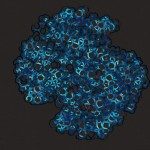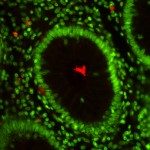Link to Pubmed [PMID] – 9224869
Gene 1997 Jun;192(1):13-9
The main terminal branch (MTB) of the general secretory pathway is used by a wide variety of Gram- bacteria to transport exoproteins from the periplasm to the outside milieu. Recent work has led to the identification of the function of two of its 14 (or more) components: an enzyme with type-IV prepilin peptidase activity and a chaperone-like protein required for the insertion of another of the MTB components into the outer membrane. Despite these important discoveries, little tangible progress has been made towards identifying MTB components that determine secretion specificity (presumably by binding to cognate exoproteins) or which form the putative channel through which exoproteins are transported across the outer membrane. However, the idea that the single integral outer membrane component of the MTB could line the wall of this channel, and the intriguing possibility that other components of the MTB form a rudimentary type-IV pilus-like structure that might span the periplasm both deserve more careful examination. Although Escherichia coli K-12 does not normally secrete exoproteins, its chromosome contains an apparently complete set of genes coding for MTB components. At least two of these genes code for functional proteins, but the operon in which twelve of the genes are located does not appear to be expressed. We are currently searching for conditions which allow these genes to be expressed with the eventual aim of identifying the protein(s) that E. coli K-12 can secrete.




